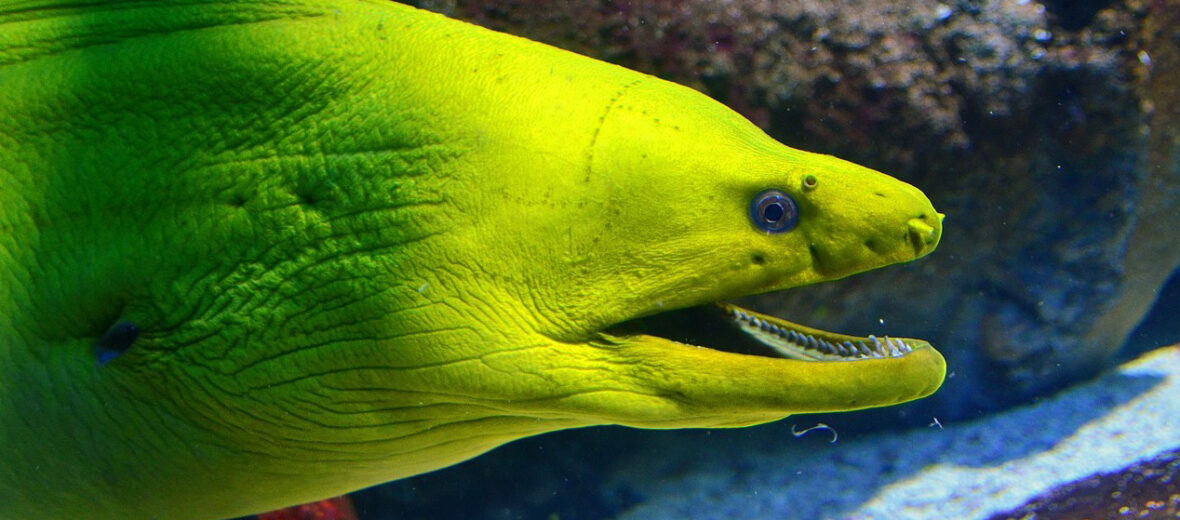
The moray eel is the largest of all the eel species. They are aggressive, dangerous, and even have xenomorph jaws to boot. These eels are found in warmer salt and brackish water environments. There are 200 known species of moray ranging from 6 inches to 15 feet long! Divers will often lure them from their caves with the allure of a fishy meal. This is ill-advised, as they are quick ambush predators with lots of sharp, backward facing teeth that can strip the flesh from your fingers or hand in seconds! I had an acquaintance once who had the meat completely stripped from one of his fingers, by a moray.
First the Stats…
Scientific name: Muraenidae
Weight: Up to 30 lbs.
Length: Up to 11.5 feet
Lifespan: Up to 30 years
Now on to the Facts!
1.) First off, these eels have a wicked bite! They not only bite with their main jaws, but they have a concealed set of chompers called pharyngeal jaws that they use to pull food down their throat. Like the xenomorph in the movie Alien!
2.) They are primarily nocturnal (active at night) but some species are diurnal (active during the day).
3.) Their primary prey items are fish, squid, octopus, crabs, cuttlefish, mollusks, and the occasional finger.
4.) The main predators of morays are barracudas, sharks, and fishermen.
5.) Having poor eyesight, they rely mainly on their incredible sense of smell to locate prey.
But wait, there’s more on the moray eel!
6.) A gaping mouth isn’t a sign of aggression. They keep their mouths open in order to siphon oxygen-rich water past their gills.
7.) Moray eels excrete a toxic mucus coating that helps them fend off predators.
Did you know…?
The fin along their back is actually comprised of three fused fins: the dorsal, the adipose, and the caudal fin.
8.) Cleaner shrimp are allowed into the mouths and onto the gills and skin of the moray eel in order to groom them of parasites, of which they have many. Occasionally these shrimp end up as a meal though.
9.) Females mate with males by entwining together for up to 2 hours. The female then releases up to 10,000 eggs that are fertilized by the male.
10.) The eggs eventually hatch and the free floating larvae drift about in the open water till they develop into fully formed eels which then return to the ocean floor and start their life as a fierce moray.
Now a Short Moray Eel Video!
Also, check out the Critter Science YouTube channel. Videos added frequently!
Want to suggest a critter for me to write about? Let me know here.



